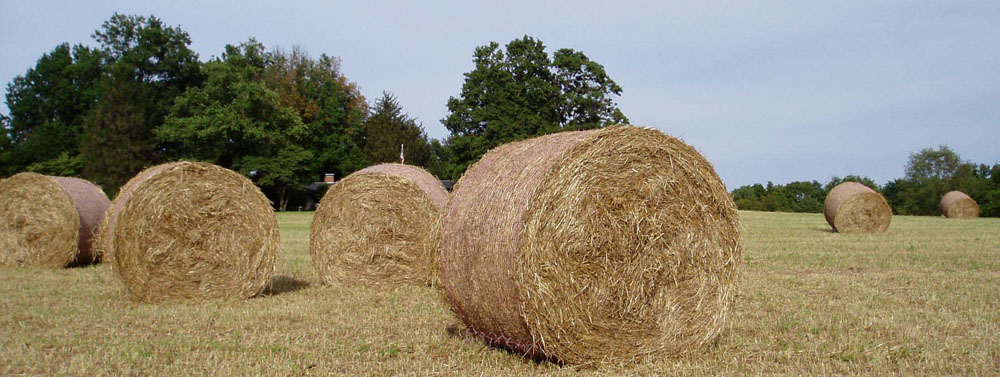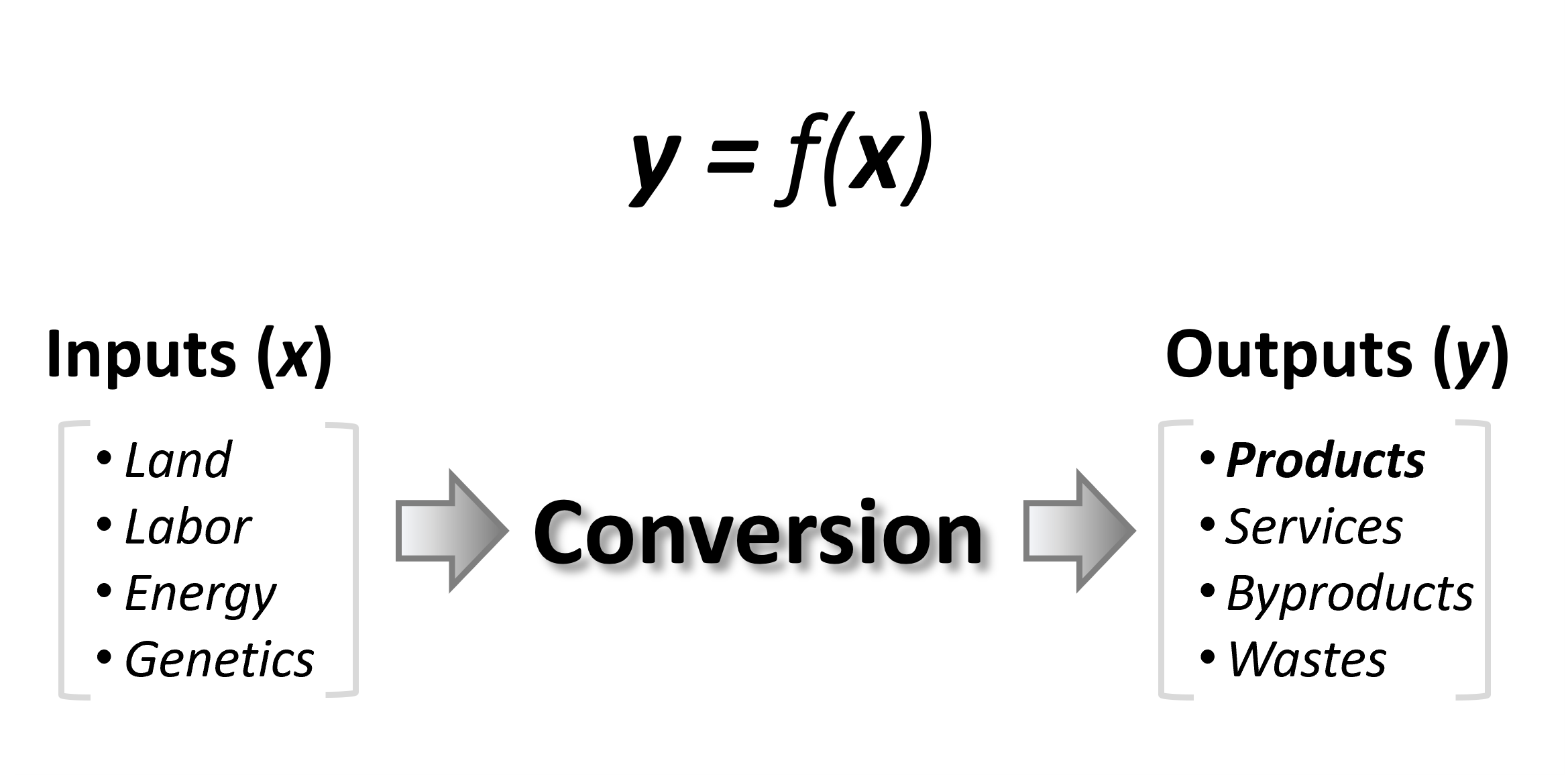Technology Describes Outputs as a Function of Inputs
My career has been defined as y = f(x).
Technology, and in this case, Outputs, y, are (created from,=,) a function of, f(), inputs, x. In other words, how inputs are combined determines the technology. Corn can be grown with draft animals and manure or with biotechnology and satellites. The output is still corn.
This is not rocket science. It is pretty clear that corn comes from seed, fertilizer, labor, fuel, etc. The magic happens when outputs include more than only the valuable output like corn. Other outputs from corn are oxygen, corn stalks, and unharvested kernels (future volunteer corn). The inputs, in my biomass utilization world, include the above, but also rainfall and carbon dioxide (CO2).
- This topic thread began with a look at Census of Ag, farm data based on North American Industrial Classification System (NAICS) codes by type of farm. The excellent farm data in Table 48 of Volume 1, only provided crop and livestock types of data. No farm energy data. A conclusion is that biofuels don’t really happen on the farm, so perhaps that was not the best place from which to search.
- The next post was looking at farm generated energy from the same dataset, the Census of Agriculture. The USDA presented the NAICS codes in Table 48 of Volume 1, and the farm produced energy in Table 49 of Volume 1. It is a little confusing. But the NAICS codes are the data system that does not provide energy production as a function of farming, not the Census of Ag. The energy produced on farms in Table 49 was not biofuels (ethanol or biodiesel), which does happen off the farm.
- Today’s post, and likely the next post or two look at more than the traditional outputs and inputs.
- The goal is to get to byproduct markets. Further up the supply chain and not on the farm these are common. One pig goes into many meat products and byproducts. Soybeans are crushed into soybean meal and vegetable oil. Corn at dry mill ethanol plants yields ethanol, distillers grains, corn oil and carbon dioxide.
Green plants photosynthesize. They convert solar energy into chemical energy in the form of carbohydrates and protein. Each plant leaf is a biorenewable solar receptor. The plant grows new receptors every year. Production agriculture cannot make more sun, but significant work goes into capturing as many photons each season as possible through managing plant spacing and canopies.
Moving away from conventional inputs that are considered, in a more general sense, the inputs into corn could be the biology, chemistry, physics, and time. Egg farms with layer chickens feed the chickens and the chickens produce eggs. They also produce chicken manure. The feed waste and fluids that are unused by the chicken don’t get reused on the farm to the benefit of the chickens. If an output, byproduct has no value in the original process, it must be moved into a different supply chain market to add value. Chicken manure can have value in the crop fertilizer market and in the energy markets. Traditionally, this additional step or strategy is what keeps chicken manure from being managed easily. It has simply not been considered historically; then environmental manure problems occur.
When byproducts – non-traditional farm outputs – are managed well, new sources of revenue appear and offset traditional waste management costs. But they must be intentionally managed, and they also must move out of the primary product market (NAICS code) supply chain to be valued.
Outputs are a function of inputs. This is the operating definition of technology at Biomass Rules, LLC. It really only pays off when all the inputs and all the outputs are considered. When this happens, each farm becomes a refinery, and it is more a matter of dialing up the suite of products that produces the cumulative greatest revenue at the lowest costs.



Comments
Technology Describes Outputs as a Function of Inputs — No Comments
HTML tags allowed in your comment: <a href="" title=""> <abbr title=""> <acronym title=""> <b> <blockquote cite=""> <cite> <code> <del datetime=""> <em> <i> <q cite=""> <s> <strike> <strong>